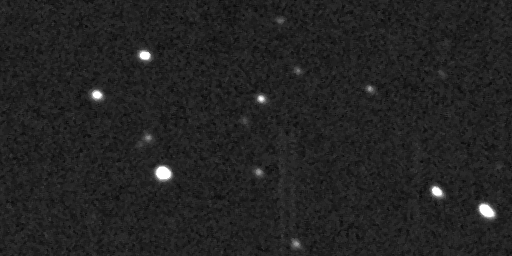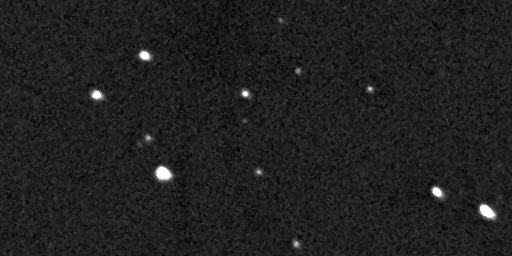

These two V-band images, taken 51 minutes apart, show the reflex apparent motion of the interesting object Chiron. Chiron is the first-known member of the Centaur class, orbiting between the locations of Jupiter and Neptune, and sharing features of minor planets and comets (such as the coma that Chiron occasionally shows, earning it the designation 95P/Chiron and being one of the reasons for the new IAU designation systems for small solar-system objects). Chiron's orbit has a semimajor axis of 13.7 AU and eccentricity of 0.38; for more detail and ephemerides if you want to observe it, see, for example, Patrick Vanouplines' Vrije Universiteit Brussel site. More Centaurs are to be found in the list maintained at the CfA. Centaurs are in orbits which are unstable over astronomically (and geologically, for that matter) long times, so they must be transient refugees from the Kuiper Belt.
These images were taken in the predawn sky on 15 September 1991, just as Chiron came out from behind the Sun, at 1115 and 1206 UT. They are 60-second V-band images with a TI CCD at the 1.1-meter Hall telescope of Lowell Observatory. Chiron can be recognized because of its 11.6-arcsecond motion between the images; at this distance, the apparent motion is almost entirely a reflection of the Earth's orbital motion. Each image is a 3.02x6.04-arcminute section, aligned on the background stars. One of these days I'll make them an animated GIF to automate the blinking.
 UA Astronomy Home Page
keel@bildad.astr.ua.edu
UA Astronomy Home Page
keel@bildad.astr.ua.edu Last changes: August 1997